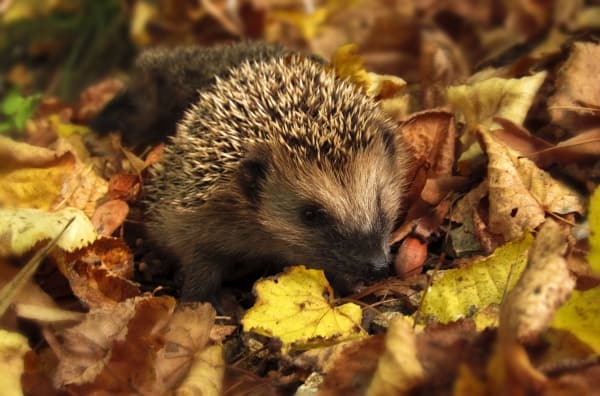Unlit bonfires make ideal habitats for wildlife, from hedgehogs to frogs. So if you’re holding a bonfire night event this year, follow these seven simple steps and protect your local wildlife.

1 – Know where your bonfire materials came from
Don’t just use any old wood you’ve found lying around – it may have been chemically treated or painted meaning that it’ll release toxic chemicals into the air when you burn it. This can be unpleasant for humans and hugely dangerous for wildlife. So source your bonfire materials from safe places, and don’t burn pallets marked MB.
Talk to local businesses if you’re holding a bonfire for the public. For example, we have donated safe pallet wood to Poynton Bonfire for years, to help them raise money for good causes.
2 – Choose a wide open space
It’s important that your bonfire is built as far away as possible from any trees and hedgerows, to minimise disruption to birds and nests from the smoke and heat. Building it in an open space should also dissuade other wildlife from taking shelter in it.
3 – Don’t build your bonfire too early
Store your bonfire materials in a different place to where the bonfire will be lit, then move everything as late as possible on the day it will be burnt – this will really limit the opportunity that wildlife has to settle in it.
4 – Check for wildlife before you light your bonfire
Even if you’ve already checked, check again at the last minute to make sure nobody has snuck in – use a torch to get a really good look in. And remember, you’re not just looking for hedgehogs. Newts, frogs and toads also like to take shelter in piles of leaves and logs.
Another useful tip is to light it from one side only – that way, anything still in there will have a chance to escape out the other side.
5 – If you find a hedgehog, move it gently
Carefully pick up the hedgehog using gloves and move it somewhere safe and well away from the action. Look for somewhere sheltered from the wind and rain, ideally under a tree or shrub where there are some dead leaves about to offer additional cover.
Newts, toads and frogs will also need a little encouragement to move – you can use the same approach as for hedgehogs. You’re looking for as similar a habitat as possible. You may disorient them by moving them, but you won’t do them any harm.
6 – Save some of your nesting materials
Ideally, you want to build alternative habitats for wildlife in the area long before the bonfire is built – this should divert newts, frogs, toads and hedgehogs from the bonfire itself, especially if you’re not building it until the last minute.
Remember not to burn everything in the area either, or you’ll leave wildlife with nothing – save some nesting materials back so they’ve still got some shelter.
If you wanted to build something more permanent for wildlife, you can build a pallet shelter such as this one.
7 – Put the bonfire out properly
The embers from your bonfire can stay hot for days, posing a threat to wildlife looking for shelter. So make sure you douse the embers from your bonfire properly with water before you leave it.
Finally, have a wonderful bonfire night! Stay safe, have fun, and protect our wildlife.
